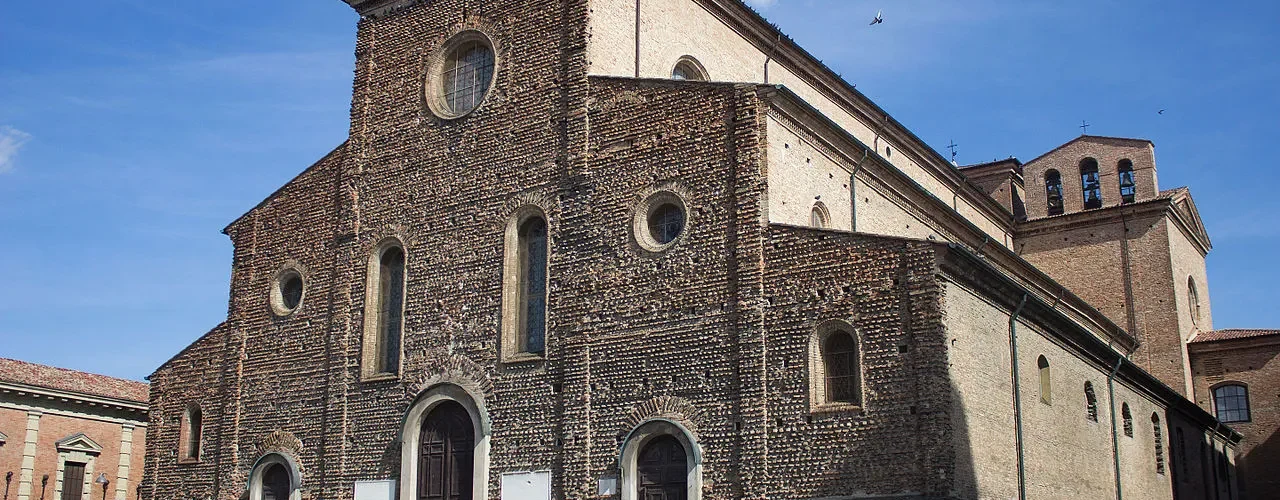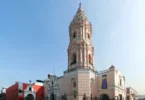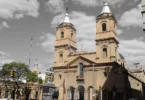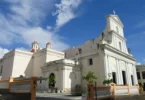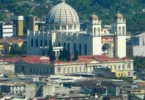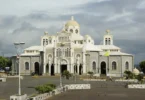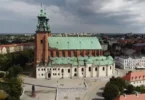Introduction
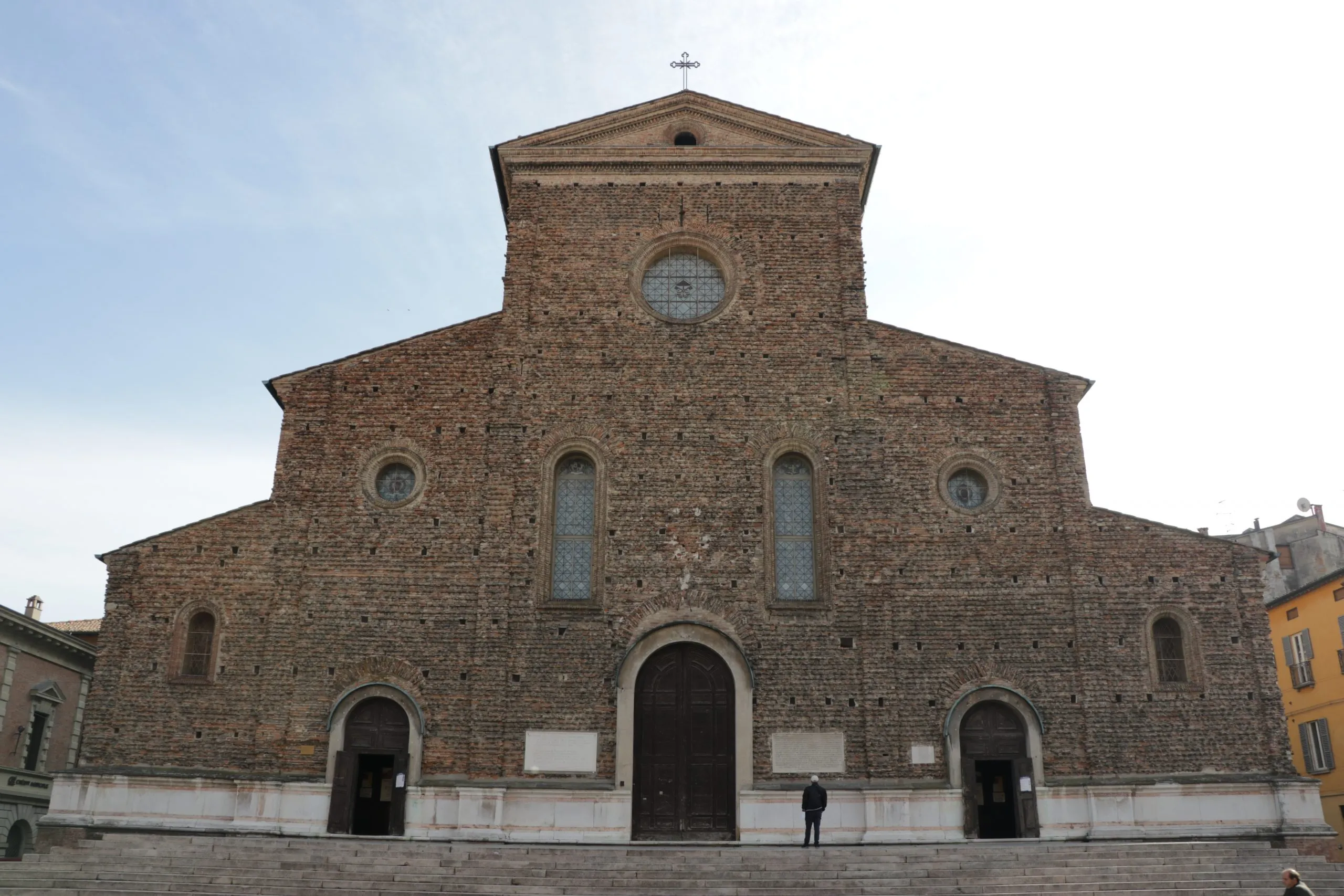
The Faenza Cathedral, known as Duomo di Faenza in Italian or Cattedrale di San Pietro Apostolo, stands as one of the most significant landmarks in the city of Faenza, located in the Emilia-Romagna region of Italy. This Roman Catholic cathedral was built in the style of the Tuscan Renaissance, a design characterized by its harmonious proportions, classical elements, and elegant simplicity. Situated at the heart of Faenza, it serves as both a place of worship and a cultural monument, showcasing the architectural beauty of the Renaissance period. The cathedral is the mother church of the Diocese of Faenza-Modigliana and holds great spiritual and historical importance. It is dedicated to Saint Peter the Apostle, one of the most prominent figures in Christianity, symbolizing the foundation of the Church. As the seat of the Bishop of Faenza-Modigliana, the cathedral plays a central role in the religious life of the local community. It hosts numerous liturgical celebrations, including Mass, special feasts, and other religious ceremonies, bringing together worshippers from across the region.
In addition to its religious significance, Faenza Cathedral is an architectural masterpiece. Its design reflects the ideals of the Tuscan Renaissance, with clean lines, balanced proportions, and a sense of tranquility that draws visitors and pilgrims alike. The cathedral’s grandeur and historical importance make it an essential part of the cultural fabric of Faenza, symbolizing the city’s rich heritage and deep religious roots. Overall, Faenza Cathedral stands not only as a place of spiritual reflection but also as a testament to the city’s artistic and cultural evolution during the Renaissance period. Its stunning architecture, combined with its significant role in the Diocese of Faenza-Modigliana, makes it an iconic and revered landmark in the heart of Faenza.
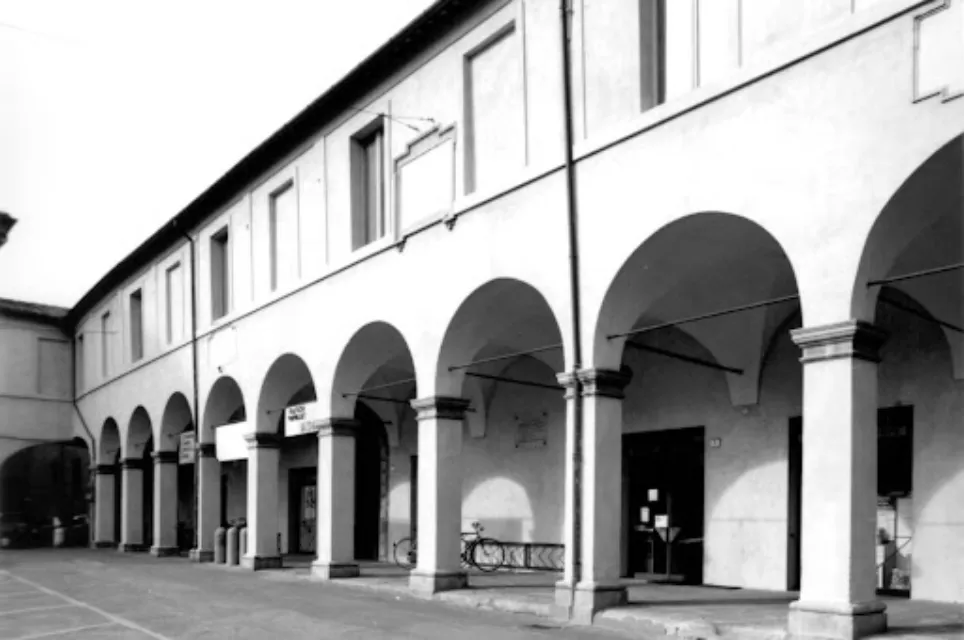
The Faenza Cathedral is a prime example of Renaissance architecture in the Romagna region, strongly influenced by Tuscan design. Its construction began in 1474 under the commission of Carlo II Manfredi, the lord of Faenza, with his brother Federico serving as the bishop of Faenza at the time. The cathedral was designed by the renowned Florentine architect Giuliano da Maiano, known for his contributions to Renaissance architecture. The construction process, however, was lengthy and complex, taking over four decades to complete. Despite being initiated in 1474, the building was not finished until 1515, and even then, the façade remained unfinished, a notable feature of the cathedral’s structure. The cathedral was originally dedicated to Saint Peter the Apostle, but this formal dedication did not take place until 1581, marking an important milestone in its religious history. Throughout its construction and completion, the cathedral underwent various changes and renovations, reflecting the evolving architectural trends of the time.
Faenza Cathedral is the third cathedral in the city’s history, following two predecessors. The first, Santa Maria foris Portam, served as the cathedral until the year 743. The second cathedral, constructed at the same site as the current one, is believed to have been built over the remnants of the first. While the exact dates of its construction are unclear, this second cathedral had a façade facing east and was designed with three naves, which was typical of the period. In recognition of its historical and religious significance, Pope Pius XII elevated the cathedral to the rank of Minor Basilica in October 1948, further solidifying its importance within the Catholic Church. Today, Faenza Cathedral stands as a symbol of the city’s rich religious and architectural heritage, combining Renaissance artistry with deep spiritual significance.
Architecture of Cathedral Basilica of St. Peter the Apostle, Faenza, Italy
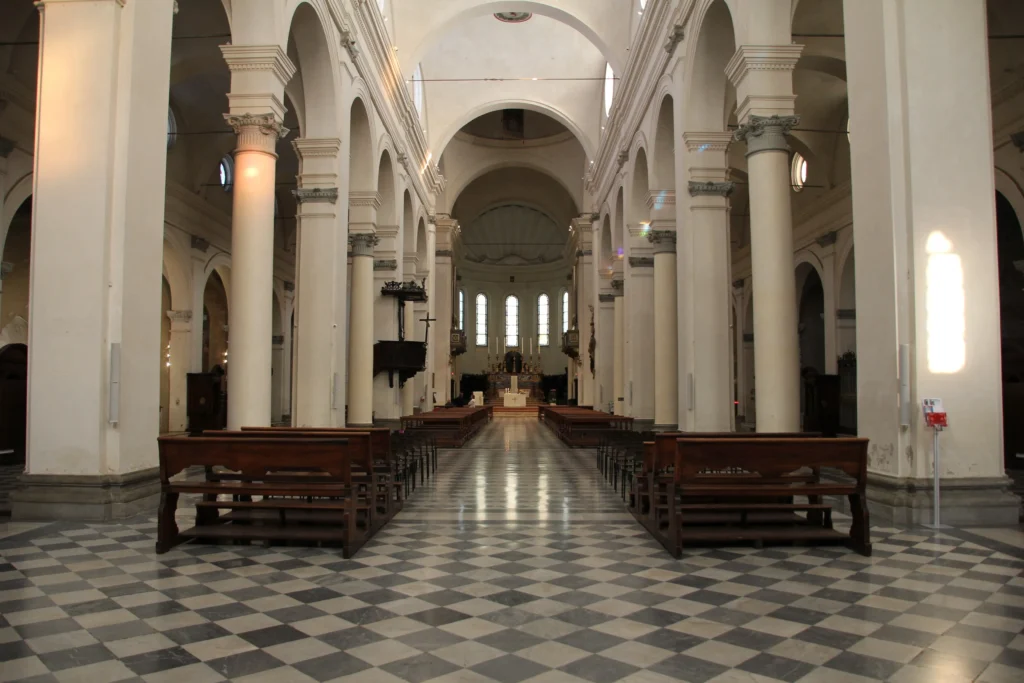
Architect: Giuliano da Maiano
Architectural style: Renaissance Architecture
Exterior
The exterior of Faenza Cathedral is characterized by its unfinished brick façade, which remains an iconic feature of the structure. The façade is preceded by a large staircase, providing a grand entrance to the cathedral. The façade, left incomplete in terms of its marble or stone cladding, features protruding bricks, offering a texture that reflects its exposed brickwork. At the lower part of the façade, three round-arched portals correspond to the three internal naves. These arches provide an inviting and symmetrical entrance to the church. To either side of the central entrance, there are two single-lancet windows aligned with the side chapels. Moving upwards, the upper portion of the façade showcases two oculi that correspond to the side naves, as well as two tall single-lancet windows and a rose window that marks the central nave. The façade is crowned with a simple triangular pediment and is topped by a wrought iron cross, providing a modest yet striking finish. Above the right arm of the transept stands the cathedral’s bell tower, a classic sail-style tower that houses three bells, each placed within its own arch. The tower enhances the cathedral’s imposing presence and serves as a significant part of the skyline of Faenza.
Interior
Inside, the cathedral follows a Latin cross floor plan, a layout that emphasizes a central axis aligned with the altar. The interior is divided into three naves separated by round arches that rest on alternating Ionic pillars and composite columns. The central nave, the largest, leads the way to the apse. The side naves are flanked by eight chapels on each side, offering a space for devotion and reflection. The cathedral’s deep apse culminates in a shell-shaped basin, where the altar is placed. Five tall single-lancet windows illuminate this space, casting a serene light on the altar area. Behind the high altar, crafted from polychrome marble, is a wooden choir that dates back to 1513, adding historical and artistic value to the church’s interior.
Artistic Treasures of Faenza Cathedral
The interior of Faenza Cathedral is rich in Renaissance art, particularly sculptures, showcasing works of great religious and historical significance. Notably, the Chapel of the Blessed Virgin of Graces houses a fresco from 1412, which depicts the Virgin Mary breaking arrows, symbolizing her protection from danger. This chapel, created as a diocesan sanctuary, has become a major symbol of faith for the city. The Chapel of the Crucifix contains a wooden crucifix from 1474-1480, attributed to Giovanni Teutonico, while the Ark of Saint Terenzio of Imola, completed in 1462, is a remarkable piece by a Tuscan master. Another significant piece is the Ark of Saint Savino, crafted in 1468, possibly by Benedetto da Maiano, a sculptor from Florence. Additionally, the Ark of Saint Emiliano, from the second half of the 15th century, includes marble reliefs that are now displayed in the Jacquemart-André Museum in Paris. The Painting by Innocenzo da Imola from 1526 also adds to the cathedral’s collection, depicting the Blessed Virgin with the Infant Jesus and saints. The Altar of the Blessed Virgin of Graces holds deep importance, as it commemorates the Virgin’s apparition during the plague of 1412, when she promised to end the epidemic. The fresco of Madonna delle Grazie, featured in the altar, is not only a work of art but a lasting symbol of the city’s gratitude and devotion.
The Choir and Pipe Organ
The cathedral houses a remarkable wooden choir, crafted in 1513, located behind the high altar. It is an intricate part of the cathedral’s interior, connecting the worship space with its historical elements. The Mascioni Opus 809 pipe organ, built in 1962, adds to the cathedral’s musical heritage. With its electric transmission, the organ features three keyboards, each with 61 notes, and a 32-note concave-radial pedalboard. Positioned within the apse, the organ’s console and expressive case are integrated into the wooden choir.
Notable Burials
The cathedral also serves as the final resting place for notable figures, including Saint Peter Damian, whose body has been buried in a side chapel since 1898. His tomb is a site of pilgrimage for many Catholics.
The Portico and Fountains
In front of the cathedral stands the Portico degli Orefici (“Portico of the Goldsmiths”), built around 1610. This arcade, along with the monumental fountains featuring bronze sculptures, adds to the architectural splendor of the cathedral’s square. These fountains, dating from the 17th century, complement the grandeur of the cathedral and provide a serene atmosphere for visitors.
Feast Day
Feast Day : 29 June
The feast day of Saint Peter the Apostle, to whom the Cathedral Basilica of St. Peter the Apostle in Faenza, Italy, is dedicated, is celebrated on June 29 each year. This feast commemorates the martyrdom of Saint Peter, one of the twelve apostles of Jesus Christ, who is considered the first Pope by the Catholic Church.
Church Mass Timing
Yet to Update
Church Opening Time:
Monday : 7:00 am – 12:00 pm., 4:00 pm – 6:30 pm.
Tuesday : 7:00 am – 12:00 pm., 4:00 pm – 6:30 pm.
Wednesday : 7:00 am – 12:00 pm., 4:00 pm – 6:30 pm.
Thursday : 7:00 am – 12:00 pm., 4:00 pm – 6:30 pm.
Friday : 7:00 am – 12:00 pm., 4:00 pm – 6:30 pm.
Saturday : 7:00 am – 12:00 pm., 4:00 pm – 6:30 pm.
Sunday : 7:00 am – 12:00 pm., 4:00 pm – 6:30 pm.
Contact Info
Address :
Piazza della Liberta, 48018 Faenza RA, Italy.
Phone : +39 0546 664510
Accommodations
Connectivities
Airway
Cathedral Basilica of St. Peter the Apostle, Faenza, Italy, to Forli Airport, distance between 24 min (21.2 km) via Via Circonvallazione Nord Est/SS727 and SS 9 Via Emilia.
Railway
Cathedral Basilica of St. Peter the Apostle, Faenza, Italy, to Brisighella Railway Station, distance between 20 min (13.4 km) via Via Firenze and Strada Provinciale 302 R Brisighellese-Ravennate.

